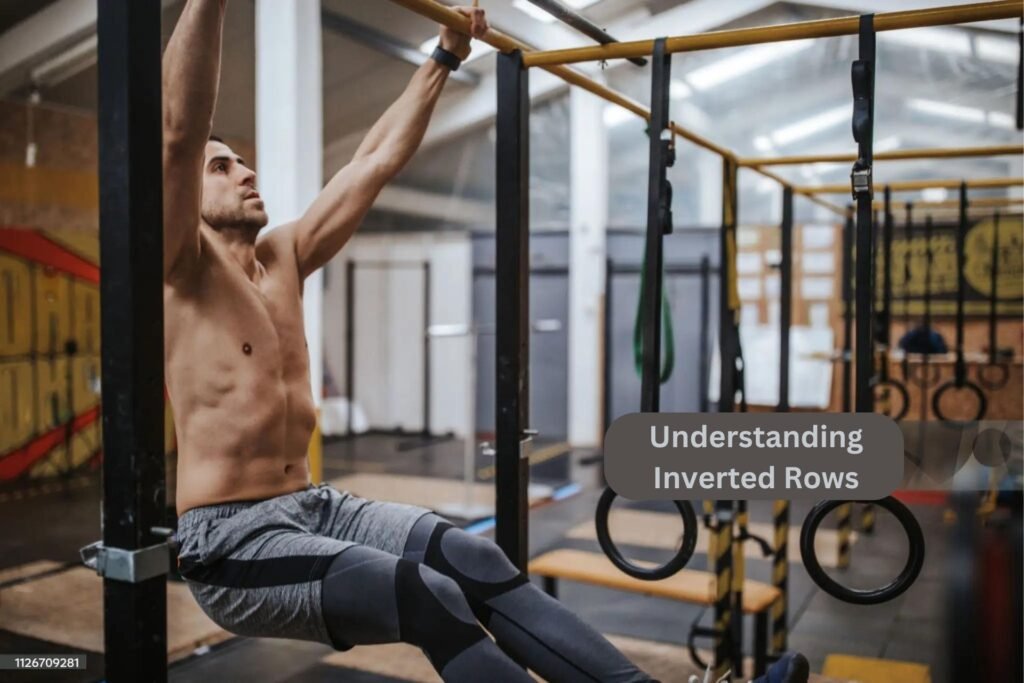Ever thought about doing inverted rows at home with zero equipment?
You’re not alone. If you’re stuck at home but still want to build a powerful back and improve your strength, inverted rows are your answer.
No fancy gear is needed—just a bit of creativity and grit.
Let’s dive into how you can nail this exercise and transform your home workouts.
Understanding Inverted Rows
So, what the heck are inverted rows? Simply put, they’re a bodyweight exercise that targets your back, biceps, and core.
You pull your chest towards a bar or surface, using your own body weight.
They’re fantastic for building upper body strength and can be done just about anywhere.

How to do Inverted Rows at home Without Equipment
No gym, no problem. You can still get a killer workout using stuff around the house. Here’s how:
- Find a Sturdy Surface: Look for a solid, horizontal surface like a table, a sturdy broomstick between two chairs, or even a strong railing.
- Position Yourself: Lie underneath the surface with your chest facing up. Grab the edge with an overhand grip, hands slightly wider than shoulder-width apart.
- Pull Up: Keep your body in a straight line from head to heels. Pull your chest up towards the surface, squeezing your shoulder blades together.
- Lower Slowly: Lower yourself back down with control. Aim for a slow descent to maximise muscle engagement.
Integrating Inverted Rows into Your Routine
Here’s how to make inverted rows a part of your workout:
Sample Routine:
| Warm-Up: | 5-10 minutes of dynamic stretching. |
| Inverted Rows: | 4 sets of 8-12 reps. |
| Bodyweight Squats: | 3 sets of 15 reps. |
| Planks: | 3 sets of 30 seconds. |
| Cool Down: | Stretch your back and arms. |
| Frequency: | Aim to include inverted rows 2-3 times a week |
Tips for Perfect Form
Nailing the form is crucial. Here’s what to focus on:
- Keep Your Body Straight: Avoid sagging or arching your back. Maintain a straight line from your head to your heels.
- Engage Your Core: Your core should be tight to support your back.
- Full Range of Motion: Pull yourself all the way up and lower yourself fully. Short reps won’t give you the full benefit.
- Controlled Movements: Avoid jerky movements. Slow and steady wins the race.
Pro Tip:
Use a sturdy, horizontal surface at the right height—like a low table or a broomstick between two chairs. The key is ensuring the surface is stable and at a height that lets you keep your body straight and pull yourself up effectively.
Common Mistakes to Avoid:
- Sagging Hips: Keep your hips in line with your shoulders and heels.
- Incomplete Reps: Make sure to complete each rep by fully extending and contracting your muscles.
- Poor Grip: Use a firm grip to prevent slipping and ensure proper engagement.
Variations and Progressions
Ready to level up? Try these variations to keep things interesting and challenging:
- Elevated Inverted Rows: Place your feet on a chair or bench to increase difficulty.
- Single-Leg Inverted Rows: Lift one leg off the ground while performing the exercise for added challenge.
- Wide Grip Inverted Rows: Use a wider grip to target different areas of your back.
Explore more Variations and Progression for Inverted Rows;
Final Thoughts
So, there you have it—how to do inverted rows at home without equipment.
It’s a straightforward but incredibly effective exercise that can seriously boost your upper body strength.
Get creative with your setup, focus on perfecting your form, and make these a regular part of your routine.
Your future self will thank you.
FAQs
Can I do inverted rows with minimal space?
Absolutely. You can use a low table or a broomstick between two chairs. Just make sure it’s stable.
What if I can’t perform a full inverted row yet?
Start with partial reps or use a lower surface. As you gain strength, gradually increase the difficulty.
How can I modify the exercise for different fitness levels?
Adjust the height of the surface or modify your body angle to make the exercise easier or harder. Start with easier variations and progress as you get stronger.

